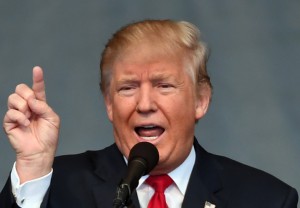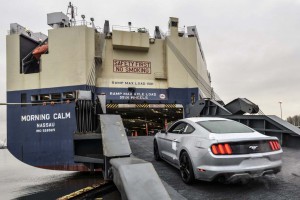Under mounting trade pressure from the U.S., China said Tuesday that it will reduce duties on imported passenger vehicles from 25% to 15%, while also cutting the tariff on imported automotive parts and components to 6%.
Chinese President Ji Xinping had promised to cut tariffs in comments made last month, though it is unclear if the move will go far enough to satisfy critics as diverse as Tesla CEO Elon Musk and U.S. President Donald Trump. With the exception of pickup trucks, the American tariff on imported vehicles is just 2.5%.
In a series of tweets last month, Trump referred to the automotive imbalance asked, “Does that sound like free or fair trade? No, it sounds like STUPID TRADE – going on for years!”
The Trump administration escalated trade friction in recent months, though both sides appeared to be backing off on their threats of a trade war this past week. China has made several moves to relax tensions, though there has been some confusion about exactly what the booming Asian nation actually intends to do to reduce a large trade deficit with the U.S.
(China tariffs on hold as trade war talk recedes. Click Here for the story.)
How much the reduction in auto tariffs will achieve is one of the questions unanswered.
About 300,000 American-made vehicles were exported to China last year, generating $10.5 billion in sales. That did mark an increase from $8.8 billion in 2016, according to the U.S. Census Bureau. But even when adding in Chinese auto imports from Europe, Japan and Korea, those vehicles make up less than 10% of the market. Imports now account for more than half of the American new vehicle market.
Tariffs have taken some of the blame for the imbalance. On a $35,000 Ford Explorer SUV, for example, the current duty adds $8,750 to the base price, making it far less competitive with vehicles produced in China. On a luxury import, such as a $100,000 Mercedes-Benz S-Class,, the tariff jumps to $25,000.
“Benefits (of a tariff rollback) are huge for our business, especially Infiniti,” an executive with Nissan Motor Co. told Reuters news service, referencing the Japanese automaker’s luxury brand.
But not everyone is so confident that a rollback will yield a flood of auto imports. For one thing, at 15%, buyers of a vehicle like a Ford Explorer would still pay an added $5,250 over a domestic SUV and $15,000 in duties on the S-Class.
“I don’t really foresee parts or vehicles being exported to China from here” in large numbers, said David Sullivan, a senior analyst with consulting firm AutoPacific Inc.
The impact might be most significant, according to some analysts, on high-line products where Chinese buyers are less sensitive to tariffs in the first place – vehicles from brands like Bentley, Rolls-Royce and Ferrari. The reduction might also help with niche vehicles that are produced in such low numbers foreign manufacturers have been reluctant to launch production at their Chinese assembly plants.
(Click Here for details about China phasing out JV rule limiting foreign plant ownership.)
The current, 25% tariffs have been extremely effective at getting automakers to set up shop in China. Foreign companies like General Motors, Toyota and Volkswagen now operate dozens of assembly plants across the country and have committed to spending billions more to expand capacity.
Even if China eventually cuts auto tariffs to a figure closer to what the U.S. levies, Sullivan said most manufacturers would limit exports to China because of the “build-where-you-sell approach” that dominates the industry these days.
That’s especially true on the parts and components side of the business, observers contend. China currently charges duties ranging from 8% to 25%, but will now cut that to 6%. But with a significantly lower labor cost base, it remains to be seen if the largely one-way flow of auto part will now become more of a two-way trade.
Ironically, China could wind up being the big winner by cutting its auto import tariffs.
The country’s domestic automakers have been trying to shift from solely supplying the home market to becoming players on the global stage – so far with little success. Ambitious brands like BYD, Geely and GAC have been looking to set up U.S. distribution networks – GAC set to open its first stores in 2019. But the dispute over tariffs threatened to see barriers erected that might otherwise block these expansion plans.
The reduction of tariffs is just a first step, at least in the eyes of global automakers. China has also hinted in recent months that it will eliminate rules that require foreign manufacturers partner with domestic carmakers when opening up factories in that country.
Such an arrangement means those foreign manufacturers not only have to share profits but they also have to provide technology that, in many cases, domestic Chinese companies are now using in their bid to become global automotive players.
(To see more about China’s plans to “significantly lower” tariffs on vehicles, Click Here.)
China could wind up phasing out the joint venture rules, as well, during the next several years.



